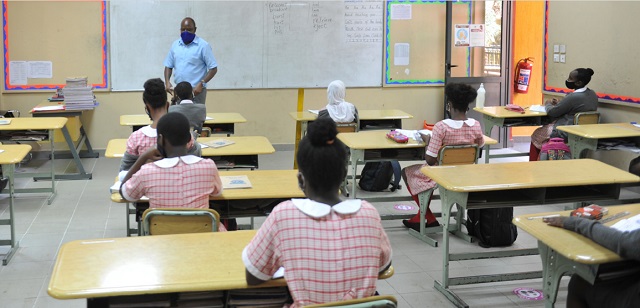
Why not all of them, parents ask
Kampala, Uganda | RONALD MUSOKE | How to take back Uganda’s 15 million learners back to school safely amidst a rampaging COVID-19 pandemic? That continues to be a sensitive subject for the government, parents, learners and health experts.
Almost one year on since President Yoweri Museveni ordered a nationwide closure of schools to shield the country from rapid spread of the Coronavirus, over 90% of children who should be in school remain home. Many are restless, hopeless, and pessimistic.
This prompted President Yoweri Museveni on Feb.04 to address the nation on the issue of reopening schools.
The President clarified on the latest decision his government reached on Feb.01 regarding the further easing of more learners into the school system this year. Museveni said the government is now allowing semi candidate learners (pupils and students in P.6, Form 3 and Form 5) to return to school on March 01.
The latest group, Museveni said, makes up a population of about 1.7 million with about 1.2 million being in P.6 while 456,000 are Form 3 students and 104,000 are Form 5 students. Learners in P.4, P.5, Form 1 and Form 2, will continue with distance learning.
Until now only students preparing to sit their final national examinations in Uganda’s school cycle have been allowed in school. That is just about 1.3 million learners or 10% of all learners who should be in school.
Some of the learners who are stuck at home and their parents are increasingly directing their anger at the government. It has “taken forever” to ensure that all the learners return to school, they say.
But Museveni insisted that his government made a wise decision to suspend learning last March. “It was a resounding success,” Museveni said, “The government continues to take a calculated risk.”
Should the government’s plans go as expected; there will only be three million learners who will have returned to school since the Coronavirus pandemic hit Uganda in March, last year.
Museveni said if the three million learners use facilities that were previously used by 15 million learners; this will create ample space for the learners and limit chances of spreading the pandemic.
As of Feb.04, Uganda had so far recorded 39,735 COVID-19 infections with 327 people succumbing to the pandemic while 14,310 had recovered.
By April 6, the government expects all candidates to have sat all the national examinations and the Ministry of Education and Sports will announce a detailed plan of how the other classes can come back to school.
Still, Museveni said, learning will follow a staggered procedure to control the number of students that can be in school at a given period. The idea is to maintain smaller numbers in schools. These are some of the tactics of surviving this terrible situation, he said.
The government insists that allowing big masses of young learners to go to study at school and go back home can be a big source of trouble for the rest of the population.
“Those who are agitating for reopening of schools should know the consequences of such a decision,” Museveni said insisting that the crisis is actually coming towards an end.
“Inconvenience is not the same thing as death. Inconvenience is redeemable; it is not the same way as (someone) dying,” Museveni said adding that Uganda does want many “burial parties.”
The president said tertiary institutions and universities will also open in March in a staggered manner. In the meantime, many of them should continue teaching online.
The decisions reached by the government, Museveni said, had been informed by expert advice from Ugandan scientists.
Apparently, Ugandan health experts remain worried about the reopening of educational institutions for the remaining classes. They say this might trigger a spike of COVID-19 cases in the country.
Dr. Charles Olaro, the director of curative services at the Ministry of Health told URN, a local news agency, recently, that schools need to restrict access since the many infections recorded towards the end of last year were traced through this group.
Olaro said investigations that we carried out last year showed that schools were not following all the Standard Operating Procedures (SOPs) the government ordered for them to limit the spread of COVID-19.
Meanwhile, the lack of mass testing for returning learners is also an open gateway for infections. With the number of learners expected to more than double as more classes are given the go-ahead to resume learning, this poses more danger according to scientists.
Dr. Monica Musenero, an epidemiologist who also doubles as a senior presidential consultant on epidemics told URN recently that it is important for schools, parents and learners to strictly follow the SOPs.
Museveni preaches caution
Museveni said the government has taken a more cautious approach because Uganda could easily have lost a whole generation of adults— something which would not help the young learners whom some people are desperate to see back at school. Museveni called for patience saying Uganda’s only hope is to have the vaccine by the end of February or early March so vaccinations can begin in earnest. Museveni said once older Ugandans get vaccinated, then the government shall fully reopen schools.
The post More learners allowed back to school in March appeared first on The Independent Uganda:.
from The Independent Uganda: https://ift.tt/3aMQSJB
0 Comments